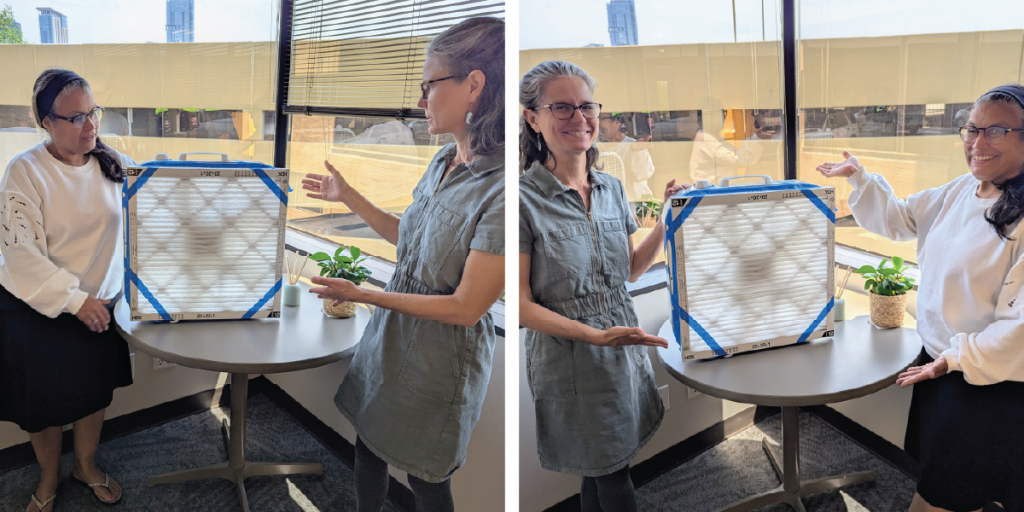How to Make a Low-Cost, DIY Indoor Air Filter
Our team made one — and you can make one too!
When poor air quality happens, like wildfire smoke, Sahara dust, or high ozone days, it can feel like you’re stuck inside with no good options. But you can do something — and it doesn’t have to cost a fortune. In fact, our team built a DIY indoor air cleaner using a box fan and an HVAC filter, and it works surprisingly well for clearing up smoke and other pollutants indoors.
Here’s what we learned — and how you can make one too.

First, here’s how to improve indoor air quality:
- Control the source (when possible): Avoid burning candles, frying foods, or using harsh cleaners.
- Let in fresh air: When outdoor air quality is good, open your windows!
- Use air filters: Portable air cleaners or HVAC filters help trap particles.
But what if outdoor air is really poor, like during wildfire season or high dust days? That’s where this DIY air cleaner can help.
Make Your Own DIY Air Cleaner
According to the EPA, attaching a high-efficiency HVAC filter to a box fan can significantly reduce indoor smoke particles. It’s an affordable, temporary solution perfect for enclosed spaces like bedrooms or offices.
What You’ll Need:
- A new box fan (2012 or newer for safety features)
- A high-efficiency HVAC filter (MERV 13 or higher is a good choice)
- Duct tape, bungee cords, or large rubber bands
How to Assemble It:
- Place the HVAC filter on the back of the fan (the side where air is drawn in).
- Secure it tightly using tape or straps so air is pulled through the filter.
- Turn it on — and breathe easier.
.gif)
Be sure to check your filter regularly and replace it when it looks dirty or clogged. These fans work best for short-term use during poor air quality events.
More Tips to Stay Ready for Air Quality Events
Wildfire smoke and dust can change quickly, so it’s good to stay prepared:
- Keep N95 or KN95 masks on hand in case you need to go outside.
- Sign up for WARN Central Texas alerts.
- Subscribe to Texas Air Quality Forecast and Ozone Action Day updates.
- Check real-time air quality on EPA’s AirNow.gov.
For more tips and emergency planning resources, check out:

